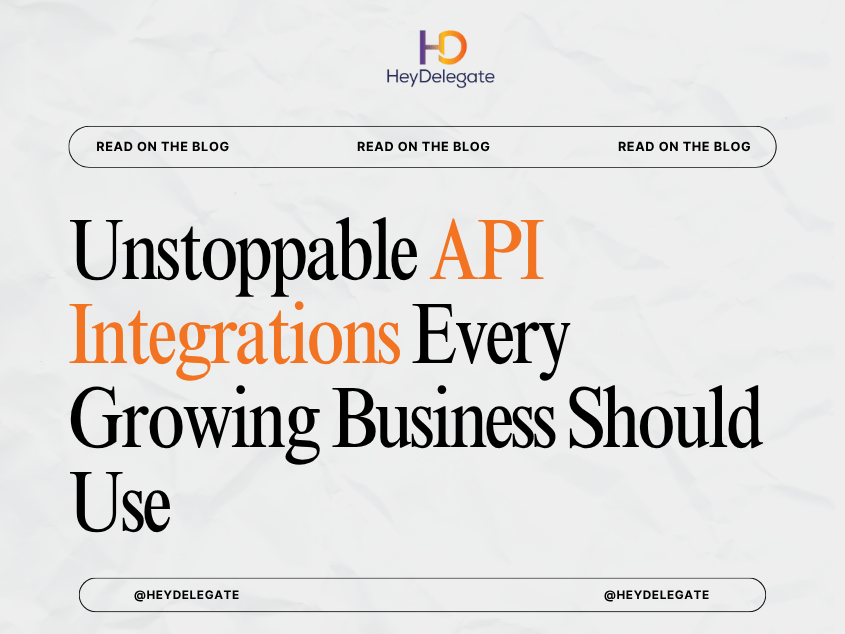Customer service isn’t just about solving problems, it’s about building trust, empathy, and emotional connection.
In today’s competitive landscape, where every business can compete on price, speed, or convenience, empathy has become the ultimate differentiator. When customers feel genuinely cared for, they don’t just come back, they become vocal advocates for your brand.
That’s where compassionate support messaging comes in. It’s the art of communicating with understanding, warmth, and respect even in high-pressure situations to leave customers feeling valued, heard, and respected.
But compassionate messaging doesn’t just happen naturally. It requires intentional design, consistent tone, and the right systems to support it. And with a Virtual Assistant (VA) managing your support channels, you can build scalable empathy ensuring every message reflects your brand’s care and humanity.
In this post, we’ll explore how to create compassionate support messaging that not only resolves issues but strengthens relationships, inspires loyalty, and turns every interaction into an opportunity to delight.
1. Why Compassion Is the Secret Ingredient in Customer Support
When a customer reaches out for help, it’s rarely just about the issue at hand. It’s about how you make them feel while solving it.
A McKinsey study found that 70% of buying experiences are based on how the customer feels they are being treated. That means your tone, language, and approach matter as much as your actual solution.
Compassionate support messaging goes beyond efficiency; it’s about acknowledging emotions and restoring confidence.
Without compassion:
“We’re sorry for the inconvenience. Please refer to our FAQ for help.”
With compassion:
“I completely understand how frustrating this must be for you. Let’s sort this out together, here’s what we can do right now…”
The difference? One message feels dismissive. The other builds trust.
Empathy doesn’t slow down support, it amplifies its effectiveness. A customer who feels cared for is more patient, cooperative, and forgiving.
When your VA delivers compassion consistently, you’re not just solving tickets, you’re building a brand that feels human.
2. The Psychology of Compassionate Messaging
Compassionate support isn’t just “being nice.” It’s a strategic communication approach rooted in emotional intelligence.
Here’s what makes it work:
A. Emotional Validation
People want to feel understood. Acknowledging their feelings (“I can imagine this was unexpected…”) disarms frustration and opens the door for cooperation.
B. Reassurance
Uncertainty fuels anxiety. Compassionate language replaces it with clarity (“Here’s what’s happening and how we’re fixing it…”).
C. Empowerment
Instead of passive apologies, compassionate messaging empowers customers with control (“You can track your request here, we’ll keep you updated every step of the way.”).
D. Gratitude
A simple thank-you goes a long way. Customers who feel appreciated are more likely to stay loyal.
3. The Building Blocks of Compassionate Support Messaging
To create messaging that resonates emotionally, your VA and support team must master five foundational elements:
1. Tone
Warm, respectful, and conversational. Avoid robotic or overly formal language.
Example:
Instead of: “Your issue has been received and will be processed shortly.”
Try: “Thanks for letting us know, [Name]! We’re already looking into this and will update you soon.”
2. Personalization
Compassion starts with recognition. Use the customer’s name, refer to their specific concern, and acknowledge their history when possible.
Example:
“Hi Sarah, I noticed this is your second order with us. Thank you for being a loyal customer. Let’s get this issue resolved right away.”
3. Clarity
Confusing or vague messages frustrate customers further. Compassionate support is clear, transparent, and avoids jargon.
Example:
Instead of: “Your request is being escalated to the technical department.”
Try: “Our tech team is reviewing your case now they’ll have an update for you within 24 hours.”
4. Positivity
Frame responses around solutions, not problems. Positive language shifts the customer’s focus from what went wrong to what’s being done right.
Example:
Instead of: “We can’t process this refund until next week.”
Try: “Your refund will be processed first thing next week, and I’ll personally confirm once it’s completed.”
5. Gratitude
Every support interaction is a chance to reinforce appreciation.
Example:
“Thanks so much for your patience, [Name]. We really appreciate your understanding as we sort this out.”
4. Frameworks for Compassionate Responses
To make compassionate communication scalable, your VA can use response frameworks structured templates that maintain tone, empathy, and professionalism.
Here are five key frameworks that every support VA should master.
Framework #1: The Acknowledge–Apologize–Assist Model (3A)
Perfect for: Product issues, delivery delays, or service errors.
Structure:
- Acknowledge: Recognize the problem and emotion.
- Apologize: Take responsibility.
- Assist: Offer an immediate solution or timeline.
Example:
“Hi [Name],
I completely understand how disappointing this delay must be. I’m really sorry it happened.
Here’s what we’ve done so far: [steps taken]. You can expect your updated delivery by [date].
I’ll follow up personally to make sure it arrives on time. Thank you for your patience.”
Framework #2: The Empathy–Explanation–Empowerment Model (EEE)
Perfect for: Technical issues or customer confusion.
Structure:
- Empathy: Acknowledge how the customer feels.
- Explanation: Clarify what’s happening.
- Empowerment: Tell them what they can do or what’s next.
Example:
“I know how confusing this error must look, [Name] thanks for flagging it.
This usually happens when [brief explanation]. Here’s what you can try: [solution].
If that doesn’t fix it, I’ll step in to handle it manually.”
Framework #3: The CARE Model
Perfect for: Complaints or escalations.
Structure:
- C: Clarify the issue.
- A: Acknowledge the emotion.
- R: Resolve with a solution.
- E: Ensure satisfaction through follow-up.
Example:
“Hi [Name],
Thank you for bringing this to our attention. I understand how frustrating this situation must have been.
We’ve corrected the issue by [solution]. To make up for the trouble, we’ve added [gesture discount, upgrade, etc.].
Please let me know if everything’s now working smoothly. I want to make sure you’re fully satisfied.”
Framework #4: The Appreciation–Assurance–Action Model
Perfect for: Post-resolution or follow-up messages.
Structure:
- Appreciation: Thank the customer for their time or patience.
- Assurance: Reinforce reliability.
- Action: Provide a next step or open invitation.
Example:
“Thanks so much for your patience while we sorted this out, [Name].
Everything should now be working as expected, and I’ll continue to monitor your account for the next 24 hours just to be sure.
Please don’t hesitate to reach out if you notice anything else we’re here for you.”
Framework #5: The Gratitude–Guidance–Goodwill Model
Perfect for: Feedback responses or post-purchase communication.
Structure:
- Gratitude: Thank the customer for their input.
- Guidance: Acknowledge feedback and explain how it’s being used.
- Goodwill: End with appreciation or reward.
Example:
“Hi [Name],
Thank you so much for sharing your feedback. We really value your insight.
We’ve passed your suggestion on to our product team for review.
As a thank-you, we’ve added a [discount code or perk] to your account. You’ve truly helped us improve!”
5. Training Your VA to Deliver Compassion at Scale
A compassionate tone doesn’t have to depend on one person’s personality. Your Virtual Assistant can embody empathy consistently by following structured guidelines and training.
Step 1: Create a “Tone of Voice” Guide
Outline your brand’s personality traits (e.g., warm, professional, friendly). Include examples of preferred greetings, word choices, and sign-offs.
Step 2: Build a Compassion Template Library
Your VA can create a library of pre-approved responses for common support scenarios using frameworks like 3A or CARE.
Step 3: Use Collaboration Tools
Platforms like HelpScout, Front, or Zendesk let your VA manage shared inboxes, tag emotional tone, and collaborate with your core team on escalations.
Step 4: Monitor Quality and Tone
Encourage regular reviews of sample replies. Highlight messages that show great empathy or creative reassurance.
Step 5: Automate, But Keep It Human
Automation tools like HubSpot Sequences or Gorgias for e-commerce can handle repetitive messages. But ensure your VA adds personalized touches to customer names, context references, and emotional acknowledgment before sending.
6. The Long-Term Benefits of Compassionate Support Messaging
When you consistently communicate with compassion, your brand gains far more than goodwill.
1. Stronger Customer Retention
Customers are more likely to return to a brand that made them feel good during a bad experience.
2. Increased Referrals
People love sharing stories of kindness. Compassionate interactions create word-of-mouth marketing that money can’t buy.
3. Improved Team Morale
When your VA and support staff handle issues with empathy, it reduces burnout. Compassionate communication benefits both the customer and the team.
4. Fewer Escalations
Understanding and proactive empathy diffuse tension early, preventing minor frustrations from turning into major complaints.
5. Enhanced Brand Identity
Your voice becomes synonymous with care, a powerful brand differentiator in crowded markets.
7. Real-Life Examples: Compassion in Action
Example 1: The Delayed Delivery
A customer writes angrily about a delayed order.
Generic Response:
“Apologies for the delay. Your item will arrive in 5–7 business days.”
Compassionate Response:
“I can imagine how disappointing it must be to wait for something you’re excited about. I’m really sorry this happened.
We’ve expedited your shipment at no cost, and you’ll receive a tracking link shortly. Thank you so much for your patience, [Name]. We appreciate you!”
Result: A frustrated customer becomes an appreciative one and shares their positive experience online.
Example 2: The Technical Issue
A customer reports a recurring login problem.
Generic Response:
“Please clear your cache and try again.”
Compassionate Response:
“I understand how inconvenient it is to face repeated login issues, especially when you just want to get things done.
I’ve reset your credentials and verified your access personally. You should now be able to log in without any trouble.
Thank you for sticking with us while we sorted this out.”
Result: Frustration turns into relief and renewed confidence in your brand.
8. Measuring Compassion: The KPIs of Empathy
Empathy can be tracked through key performance indicators that reflect emotional quality and satisfaction.
| Metric | Meaning | Tool Example |
| CSAT (Customer Satisfaction) | Measures immediate satisfaction after interaction. | Zendesk, SurveyMonkey |
| NPS (Net Promoter Score) | Gauges loyalty and willingness to recommend. | Typeform, HubSpot |
| CES (Customer Effort Score) | Tracks how easy it was to resolve the issue. | Qualtrics, Freshdesk |
| Sentiment Analysis | AI-based tone evaluation. | MonkeyLearn, Grammarly Business |
| Response Time | How fast support replies to queries. | HelpScout, Front |
By reviewing these regularly, your VA can identify tone patterns, refine templates, and ensure your brand’s compassion stays consistent.
9. The Future of Compassionate Support
As automation and AI-driven support grow, the human touch will become even more valuable. The brands that balance speed with empathy, efficiency with understanding will lead the loyalty race.
Virtual Assistants trained in compassionate communication will play a vital role, ensuring that automation enhances empathy rather than replacing it.
Your customers don’t remember how quickly you responded.
They remember how you made them feel.
Conclusion
Compassionate support messaging isn’t about perfect scripts or polished apologies. It’s about genuine connection, showing that your business listens, understands, and cares.
By empowering your VA to use structured empathy frameworks, consistent tone, and heartfelt language, you can transform every support message into a moment of trust-building.
When compassion becomes your communication standard, loyalty isn’t a goal, it’s a natural outcome. Because in a world full of automation, the most powerful tool you have is still a human voice that cares. Get your VA today from HeyDelegate.




